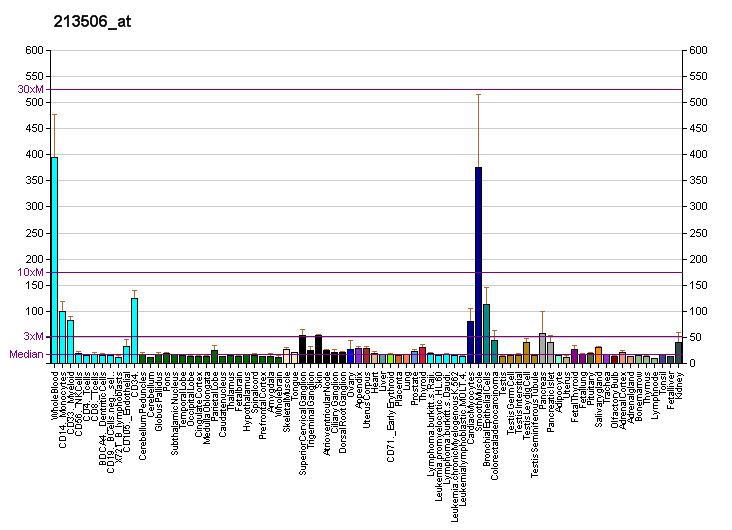Entrez 2150 | Ensembl ENSG00000164251 | |
 | ||
Aliases F2RL1, GPR11, PAR2, Protease activated receptor 2, F2R like trypsin receptor 1 External IDs MGI: 101910 HomoloGene: 21087 GeneCards: F2RL1 | ||
Protease activated receptor 2 (PAR2) also known as coagulation factor II (thrombin) receptor-like 1 (F2RL1) or G-protein coupled receptor 11 (GPR11) is a protein that in humans is encoded by the F2RL1 gene. PAR2 modulates inflammatory responses, obesity, metabolism, and acts as a sensor for proteolytic enzymes generated during infection.
Contents
Gene
The F2RL1 gene contains two exons and is widely expressed in human tissues. The predicted protein sequence is 83% identical to the mouse receptor sequence.
Mechanism of activation
PAR2 is a member of the large family of 7-transmembrane receptors that couple to guanosine-nucleotide-binding proteins. PAR2 is also a member of the protease-activated receptor family. It is activated by trypsin, but not by thrombin. It is activated by proteolytic cleavage of its extracellular amino terminus. The new amino terminus functions as a tethered ligand and activates the receptor. Additionally, these receptors can be activated by exogenous proteases, such as house dust mite protein Der P9. These receptors can also be activated non-protealytically, by exogenous peptide sequences that mimic the final amino acids of the tethered ligand.
Agonists and antagonists
Potent and selective small molecule agonists and antagonists for PAR2 have been discovered.
